Winnie-the-Pooh
Winnie-the-Pooh, also called Pooh Bear, is a fictional anthropomorphic teddy bear created by English author A. A. Milne. The first collection of stories about the character was the book Winnie-the-Pooh (1926), and this was followed by The House at Pooh Corner (1928). Milne also included a poem about the bear in the children's verse book When We Were Very Young (1924) and many more in Now We Are Six (1927). All four volumes were illustrated by E. H. Shepard. The Pooh stories have been translated into many languages. Hyphens in the character's name were dropped by Disney when the company adapted the Pooh stories into a series of features that became one of its most successful franchises.
A. A. Milne named the character Winnie-the-Pooh for a teddy bear owned by his son, Christopher Robin Milne, who was the basis for the character Christopher Robin. The rest of Christopher Robin Milne's toys, Piglet, Eeyore, Kanga, Roo and Tigger, were incorporated into Milne's stories. Two more characters, Owl and Rabbit, were created by Milne's imagination, while Gopher was added to the Disney version. Christopher Robin's toy bear is on display at the Main Branch of the New York Public Library in New York City.
* 命名由來: 「Winnie」雖然是一個女性的名字,但是「小熊維尼」是一頭公的小熊,這是因為「Winnie」這個字其實是米爾恩所參考的小熊其家鄉加拿大緬尼托巴省的首府溫尼伯(Winnipeg)的簡稱。
至於「Pooh」,在小熊系列故事的第一本《Winnie-the-Pooh》序中提到,「Pooh」曾是維尼的主人羅賓為一隻天鵝起的名字;另一說是因為小熊維尼在吹走停在他鼻子上的蜜蜂時,嘴裡會發出Pooh、Pooh的聲音而來。
Pooh is naive and slow-witted, but he is also friendly, thoughtful, and steadfast. Although he and his friends agree that he "has no Brain," Pooh is occasionally acknowledged to have a clever idea, usually driven by common sense. Pooh is very fond of food, especially "hunny" but also condensed milk and other items.

Winnie-the-Pooh

Pooh and his friends
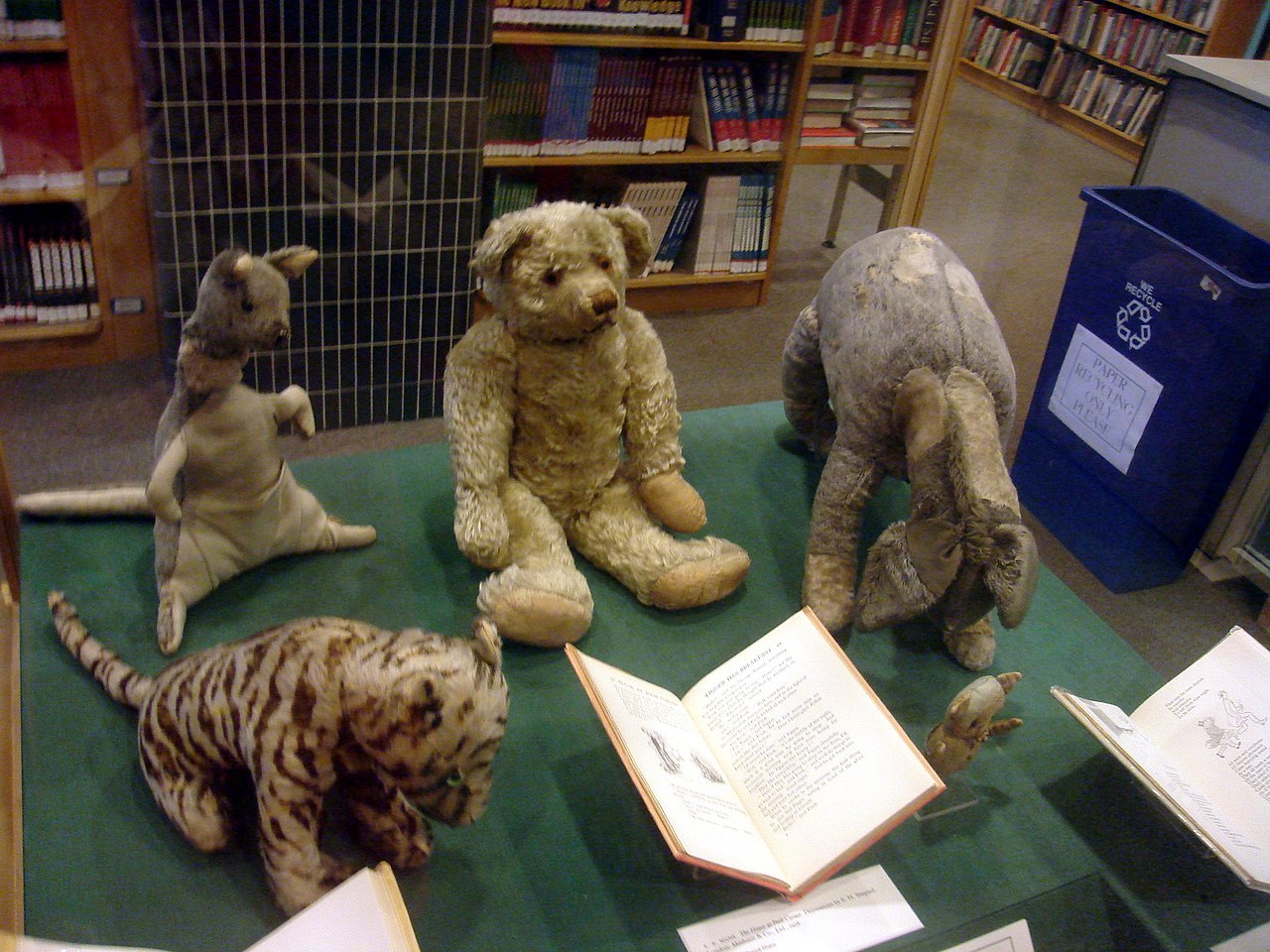
Original Winnie-the-Pooh stuffed toys
_ i _ e
For example: tiger, site, fine, time → 發 [aɪ]
_ a _ e
For example: name, pale
onomatopoeia 狀聲詞
An onomatopoeia is a word that phonetically imitates, resembles or suggests the source of the sound that it describes. Onomatopoeia (as an uncountable noun) refers to the property of such words. Common occurrences of onomatopoeias include animal noises such as "oink", "miaow" (or "meow"), "roar" or "chirp". Onomatopoeias are not the same across all languages; they conform to some extent to the broader linguistic system they are part of; hence the sound of a clock may be tick tock in English, dī dā in Mandarin, or katchin katchin in Japanese, or "tik-tik" (टिक-टिक) in Hindi.
drip-drop
drip → 小水滴 drop→大水滴
Literature nonsense:
Literary nonsense (or nonsense literature) is a broad categorization of literature that balances elements that make sense with some that do not, with the effect of subverting language conventions or logical reasoning. The effect of nonsense is often caused by an excess of meaning, rather than a lack of it. Its humor is derived from its nonsensical nature, rather than wit or the "joke" of a punchline.
Literary nonsense, as recognized since the nineteenth century, comes from a combination of two broad artistic sources. The first and older source is the oral folk tradition, including games, songs, dramas, and rhymes, such as the nursery rhyme Hey Diddle Diddle. The literary figure Mother Goose represents common incarnations of this style of writing.
Lewis Carroll makes literary nonsense a worldwide phenomenon with Alice's Adventures in Wonderland (1865) and Through the Looking-Glass (1871).
Hey Diddle Diddle:
"Hey Diddle Diddle" (also "Hi Diddle Diddle", "The Cat and the Fiddle", or "The Cow Jumped Over the Moon") is an English nursery rhyme. The rhyme may date back to at least the sixteenth century. There is a reference in Thomas Preston's play A lamentable tragedy mixed ful of pleasant mirth, conteyning the life of Cambises King of Percia, printed in 1569 that may refer to the rhyme.

The cow jumped over the moon

The dish ran away with the spoon
Alice's Adventures in Wonderland:
Alice's Adventures in Wonderland (commonly shortened to Alice in Wonderland) is an 1865 novel written by English author Charles Lutwidge Dodgson under the pseudonym Lewis Carroll. It tells of a girl named Alice falling through a rabbit hole into a fantasy world populated by peculiar, anthropomorphic creatures. The tale plays with logic, giving the story lasting popularity with adults as well as with children. It is considered to be one of the best examples of the literary nonsense genre. Its narrative course and structure, characters and imagery have been enormously influential in both popular culture and literature, especially in the fantasy genre.

Alice
Lewis Carroll: Charles Lutwidge Dodgson, better known by his pen name Lewis Carroll , was an English writer, mathematician, logician, Anglican deacon, and photographer. His most famous writings are Alice's Adventures in Wonderland, its sequel Through the Looking-Glass, which includes the poem Jabberwocky, and the poem The Hunting of the Snark, all examples of the genre of literary nonsense. He is noted for his facility at word play, logic, and fantasy. There are societies in many parts of the world dedicated to the enjoyment and promotion of his works and the investigation of his life.
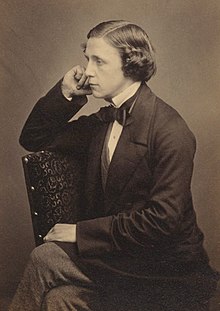
Lewis Carroll
A Book of Nonsense:
A Book of Nonsense is a volume of limericks that went through three editions and helped popularize the form and the genre of literary nonsense. It was written by Edward Lear and published in 1846.
Edward Lear:
Edward Lear was an English artist, illustrator, musician, author and poet, and is known now mostly for his literary nonsense in poetry and prose and especially his limericks, a form he popularised. His principal areas of work as an artist were threefold: as a draughtsman employed to illustrate birds and animals; making coloured drawings during his journeys, which he reworked later, sometimes as plates for his travel books; as a (minor) illustrator of Alfred Tennyson's poems. As an author, he is known principally for his popular nonsense collections of poems, songs, short stories, botanical drawings, recipes, and alphabets. He also composed and published twelve musical settings of Tennyson's poetry.
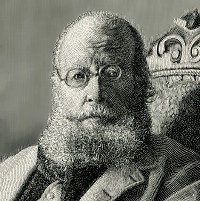
Edward Lear
Through the Looking-Glass, and What Alice Found There:
Through the Looking-Glass, and What Alice Found There (1871) is a novel by Lewis Carroll (Charles Lutwidge Dodgson), the sequel to Alice's Adventures in Wonderland (1865). Set some six months later than the earlier book, Alice again enters a fantastical world, this time by climbing through a mirror into the world that she can see beyond it. Through the Looking-Glass includes such celebrated verses as "Jabberwocky" and "The Walrus and the Carpenter", and the episode involving Tweedledum and Tweedledee.
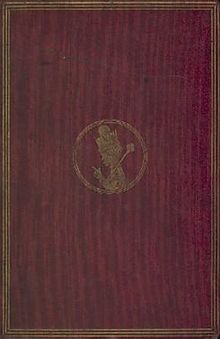
First edition cover of Through the Looking-Glass
thistle 薊
Thistle is the common name of a group of flowering plants characterized by leaves with sharp prickles on the margins, mostly in the family Asteraceae. Prickles often occur all over the plant – on surfaces such as those of the stem and flat parts of leaves. These are an adaptation that protects the plant against herbivorous animals, discouraging them from feeding on the plant. Typically, an involucre with a clasping shape of a cup or urn subtends each of a thistle's flowerheads.
Thistle is the floral emblem of Scotland, as well as the emblem of the Encyclopaedia Britannica.

Milk thistle
The Encyclopædia Britannica 大英百科全書
The Encyclopædia Britannica (Latin for "British Encyclopaedia"), is a general knowledge English-language encyclopaedia. It is written by about 100 full-time editors and more than 4,000 contributors, who have included 110 Nobel Prize winners and five American presidents. The 2010 version of the 15th edition, which spans 32 volumes and 32,640 pages, was the last printed edition; digital content and distribution has continued since then.
The Britannica is the oldest English-language encyclopaedia still in production. It was first published between 1768 and 1771 in Edinburgh, Scotland, as three volumes. The encyclopaedia grew in size: the second edition was 10 volumes, and by its fourth edition (1801–1810) it had expanded to 20 volumes. Its rising stature as a scholarly work helped recruit eminent contributors, and the 9th (1875–1889) and 11th editions (1911) are landmark encyclopaedias for scholarship and literary style. Beginning with the 11th edition and following its acquisition by an American firm, the Britannica shortened and simplified articles to broaden its appeal to the North American market. In 1933, the Britannica became the first encyclopaedia to adopt "continuous revision", in which the encyclopaedia is continually reprinted, with every article updated on a schedule. In March 2012, Encyclopædia Britannica, Inc. announced it would no longer publish printed editions, and would focus instead on Encyclopædia Britannica Online.
An ass eating thistles: Developed by authors during Renaissance times, the story of an ass eating thistles was a late addition to collections of Aesop's Fables. Beginning as a condemnation of miserly behaviour, it eventually was taken to demonstrate how preferences differ.
Two Greek poems from the 2nd century CE seem to have contributed to the making of the modern fable. One is the four-line poem of Babrius about a fox who asks an ass how it can eat thorns with such a soft mouth, which is listed as 360 in the Perry Index. The other is a simile in a short poem by Lucian in the Greek Anthology (XI.397) in which he likens the behaviour of a miser to 'the life of mules, who often, carrying on their backs a heavy and precious load of gold, only eat hay'.
Based on these, the Renaissance author Andrea Alciato created the image for misers in his Emblemata (1531). Below the picture of a loaded donkey that is stooping to eat a thistle he adds a Latin poem likening a rich man to an ass that, though it 'bears on its back costly victuals, he's a pauper who feeds himself on brambles and tough reeds'. The English emblem-writer Geoffrey Whitney was later to use the same illustration provided with a 12-line epigram based on Alciato's.
An ass eating thistles tells of 'an Ass loaded with good provisions of several sorts, which, in time of harvest, he was carrying into the field for his master and the reapers to dine upon. By the way he met with a fine large Thistle, and, being very hungry, began to mumble it; and while he was doing so he entered into this reflection: How many greedy epicures would think themselves happy, amidst such a variety of delicate viands as I now carry! But to me this bitter, prickly Thistle is more savory and relishing than the most exquisite and sumptuous banquet.' He changes the moral lesson to be learned as well, quoting the proverb 'One man's meat is another man's poison' and concluding 'he that expects all mankind should be of his opinion is much more stupid and unreasonable than the ass in the fable.'
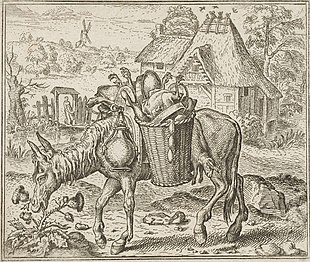
An ass eating thistles
savory 美味可口的
"I'll taste your strawberries"
strawberries→lips
"I can't be contented with yesterday's glory"
The Bat, the Birds, and the Beasts:
The Bat, the Birds, and the Beasts is one of Aesop's Fables.
A great conflict was about to come off between the Birds and the Beasts. When the two armies were collected together the Bat hesitated which to join. The Birds that passed his perch said: “Come with us”; but he said: “I am a Beast.” Later on, some Beasts who were passing underneath him looked up and said: “Come with us”; but he said: “I am a Bird.” Luckily at the last moment peace was made, and no battle took place, so the Bat came to the Birds and wished to join in the rejoicings, but they all turned against him and he had to fly away. He then went to the Beasts, but soon had to beat a retreat, or else they would have torn him to pieces. “Ah,” said the Bat, “I see now, “He that is neither one thing nor the other has no friends.”
→The deceitful have no friends!


 留言列表
留言列表